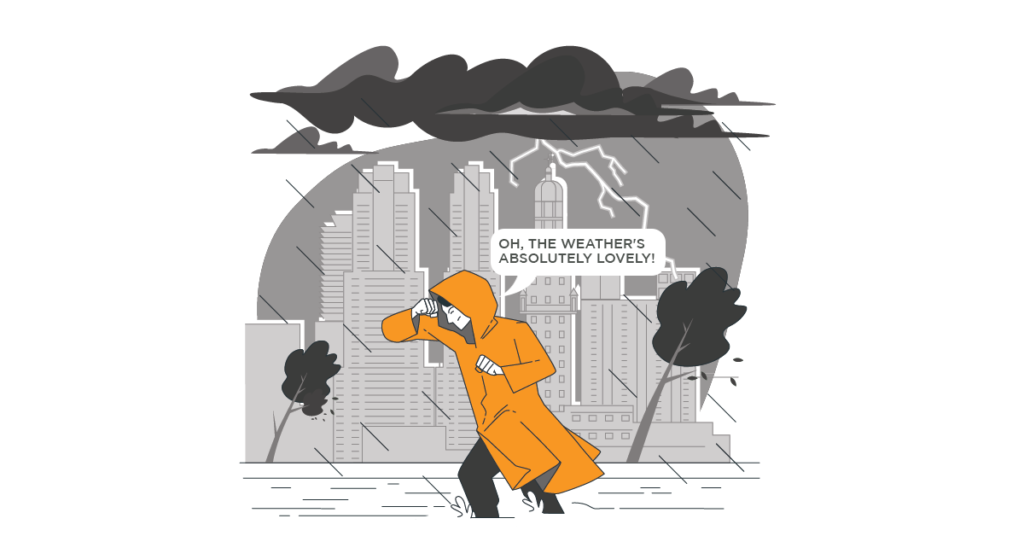Irony In Writing – Examples & Using It Right

The Titanic was an unsinkable ship” ” A deaf Ludwig van Beethoven published another great symphony” ” Life only truly begins when we have something for which we are willing to die.” You get the gist. Capturing the essence of irony in writing is the contrast between what is real and what is not while establishing the proper context. Irony, by definition, is a technique in which contradictory statements or situations reveal a different reality from what appears to be true.
Honestly, there is no right or wrong when it comes to penning down ironies in your prose. However, the writer must bear in mind that the readers should understand the irony. The crux of creating a good ironic story always holds an emotion. Be it happiness, sorrow or just an everyday mundane story. Unfolding through the emotions with conflicts is what makes irony one of the strongest literary devices. With this, let us delve into the different forms of irony.
- Verbal Irony
Verbal irony, in a nutshell, is a contrast between what is being said and what is being meant. They help readers understand a character’s emotions and how they feel and react to any situation.
Beautifully portrayed in Margaret Atwood’s “Handmaid’s Tale”. Atwood uses verbal irony to differentiate groups of people. The frontline soldiers of Gilead were called ‘Angels’ who were the most feared individuals of the state. The term ‘Aunt’ was denoted to the highest-ranking, abusive women. You can find the use of verbal irony across various genres like romance, mystery and thriller novels.
As a writer, one of the simplest hacks to use verbal irony in your writing is to find contrasting circumstances in your story and detail it out. However, this should be done in a subtle, non over-the-top way. Verbal ironies are also often used in real life with common phrases like saying “Oh fantastic” when a situation is really bad, or “What a great start to the day” after spilling coffee on the shirt.
- Situational Irony
Situational ironies are often said to go against the anticipation of readers. Going against the expected outcome of a storyline or a situation with the least possible circumstance often leads to the best situational ironies. This is often used in horror novels as it adds a layer of suspense and thrill to the story. Situational ironies are usually done with an element of bizarre, with odd juxtapositions and disparities.
Phrases like “The fire station is burning down”, “A marriage counsellor files for a divorce”, “Pilots having a fear of heights”, “A cobbler’s child had no shoes” are perfect examples of situational irony. Here we have an established storyline with characters and a set-up which is usually the exact opposite of the circumstance.
This has been highly popularized by Shakespeare’s Romeo and Juliet, J.K. Rowling’s Harry Potter and The Gift Of the Magi by O Henry to name a few.
- Dramatic Irony
Primarily seen in fiction, dramatic ironies depict situations opposing what the reader is invested in. However, the characters involved in the situation are unaware of it, and the audience has more information. Dramatic irony is generally based on events related to the character, while situational ironies can happen due to unforeseen circumstances.
Since the audience knows more than the characters, dramatic ironies are often used to create suspense and tension. You can commonly see dramatic irony being used in historical fiction and psychological thriller novels. While writing dramatic irony, generate interest in the readers by allowing them to know more.
For example, your lead character was happily waiting for his spouse to arrive, but the spouse was murdered in the previous chapter. Now that the reader knows what is coming, adding to the level of intrigue. A phrase like “It’s so beautiful I want to die” is one of the simplest examples of dramatic irony. Once a rarely used literary device, it has been popularised due to the Greek tragedies like Sophocles’s Oedipus Rex & Shakespeare’s Othello and Macbeth. Hence, it is also often known as tragic ironies.
Ironic features are often considered one of the most innovative ways to bring life to characters. So if you’re a writer who wants to publish a novel of their own, consider using one of these forms of irony to build turning points in your story and create a beautiful multi-layered narrative.


